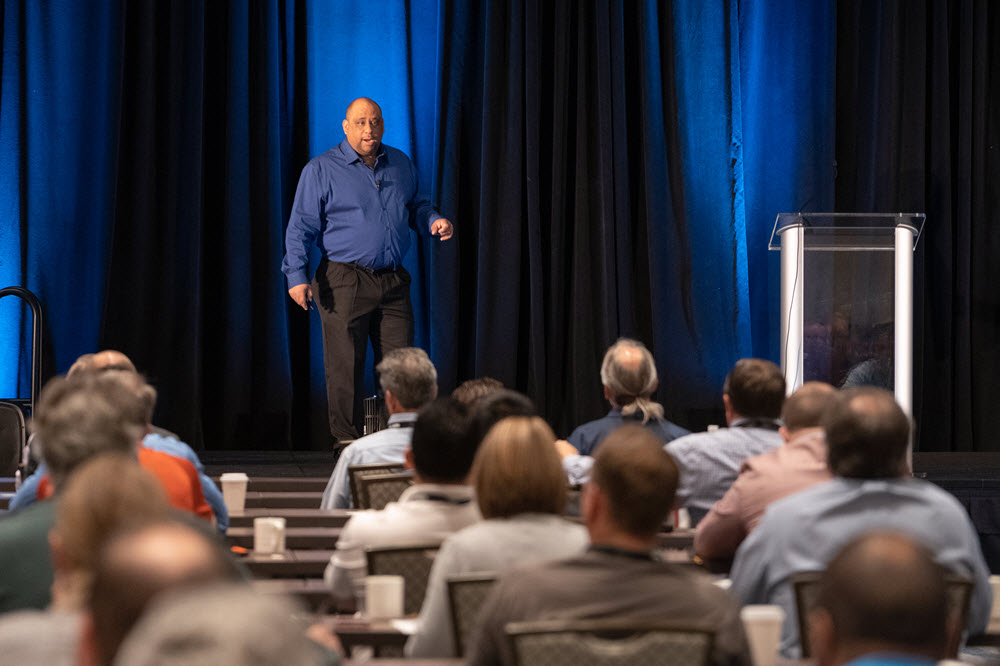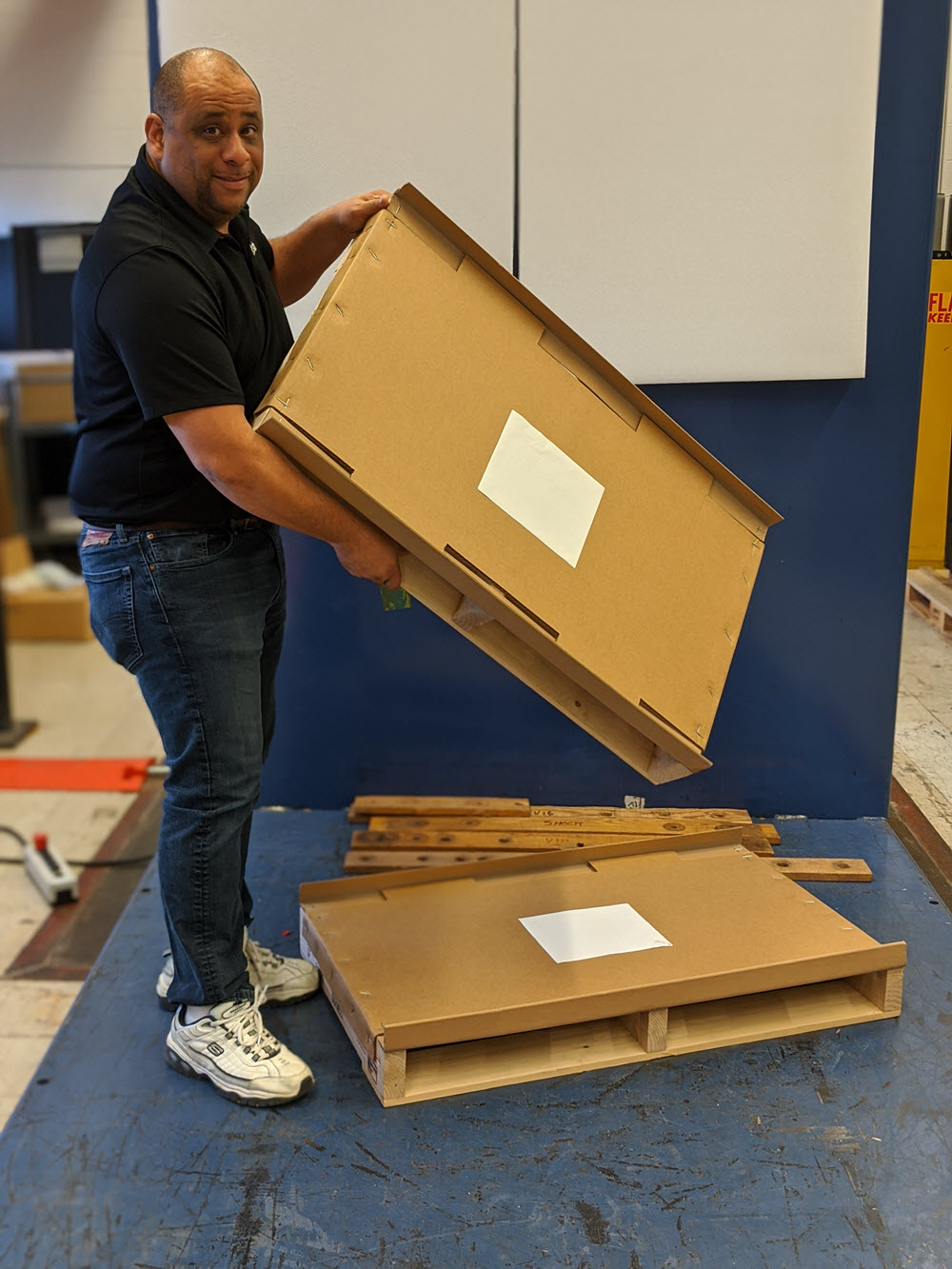Black History Month
Bill Green: Inventor, Mentor and Guardian of IBM Products
By Trish Hall
Growing up, Bill Green loved animals. And so, when he started college at Michigan State, he chose the pre-veterinary program. But when it was time to declare his major, he hesitated. A friend was studying packaging, and intrigued, Green took a course.
“This was something new, and it was exciting,’’ Green says. “The science behind it was so interesting—a little bit of physics, a little bit of art.” He not only stayed with packaging but remained at the university to get his master’s degree in the field.
Nearly 23 years later, Green is still intrigued by packaging—figuring out how to make it more logical, most sustainable and more easily tracked. At IBM he is a player-coach, both a creative scientist working with emerging technologies such as the Internet of Things and an advisor to others throughout the company. And Green’s work has contributed to a more sustainable environment.
 IBMBill Green at the International Safe Transit Association's 2019 TransPack/TempPack Forum, in Denver.
IBMBill Green at the International Safe Transit Association's 2019 TransPack/TempPack Forum, in Denver.
His title is a mouthful: he is a Senior Technical Staff Member, Asset Transit Security and Protection, based in Durham, N.C. To reach that rank, he had to be approved by a board that looked at his leadership abilities and technical achievements.
“If IBM ships something,” he says, “it is under me.” That means he is responsible for between a quarter-million and a half-million shipments a year. “Often,” he says, “IBM is shipping really big, expensive equipment, like mainframes.” His job is to get them all over the world without sustaining so much as a dent.
Patents in Packaging
Green has 12 patents to his name and several more in the pipeline. One was granted for his breakthrough creating packaging that is both strong and sustainable.
“It was kind of a simple thing, but it had a big impact,” he says. “I call it the hybrid pallet.”
All-wood pallets are heavy and resource-ravenous, but sturdy enough to withstand the poking of a forklift’s large tines. IBM considered shifting to corrugated cardboard pallets, but the tines would rip through them.
Green’s hybrid pallet is wood where the forklift engages but paper on top, reducing the amount of wood used—and the carbon footprint for the shipment.
To improve processes, Green works with technologies including the IoT and artificial intelligence to track packages and their welfare en route. Are they so cold that condensation could develop during transit? Were they turned over on their side, so that they might sustain damage? Did they get on the wrong truck and end up in the wrong place?
 IBMBill Green with his patented Hybrid Pallets.
IBMBill Green with his patented Hybrid Pallets.
Green also works on the development of hardware so that products are strong, and thus require less packaging. “If you make a product that is really weak, what has to happen?” he says. “I have to add a lot of cushioning and make boxes bigger. I can't put as many on a truck or a plane. It costs more to ship. It uses more fuel, creates more waste. Take that same product and make it twice as strong, and it can use half the cushioning and half the space in a plane or a truck.”
Since 2009, Green says, IBM has avoided using 8,700 tons of packaging material by thinking this way.
An IBMer Through and Through
Green has spent his entire career at IBM, starting in 1997. As he and his wife, Karla, were finishing graduate school—she studied behavioral psychology—they agreed that they’d move for whichever one got a job first.
While in his final year of graduate school, at a function for young engineers and high school students, Green recognized someone from IBM he had previously met. When the IBMer left the room, Green ran after him and handed him his card. A job offer ensued.
Growing up, Green lived in various cities with his parents—his father was a musician and his mother a hospital administrator. Now, he’s put down roots in Cary, N.C., a city often included on “best places to live in America” lists, with Karla and their three children, ages 18 to 12: Ella, Mattie and Owen.
In his years at the company, Green says, he has always felt comfortable as an African-American IBMer. “I have never walked the hallways or looked around and said, ‘I'm the only one.’ There has always been representation here and it’s been at all different levels. I could be myself at work.”